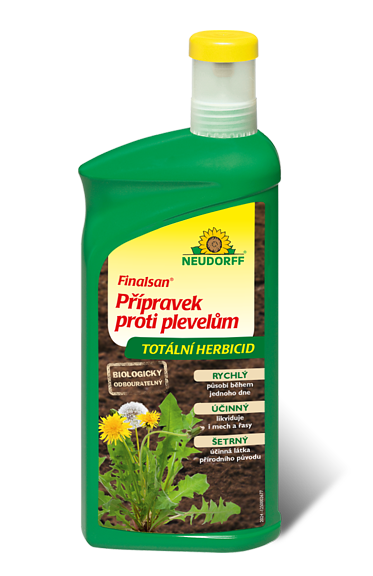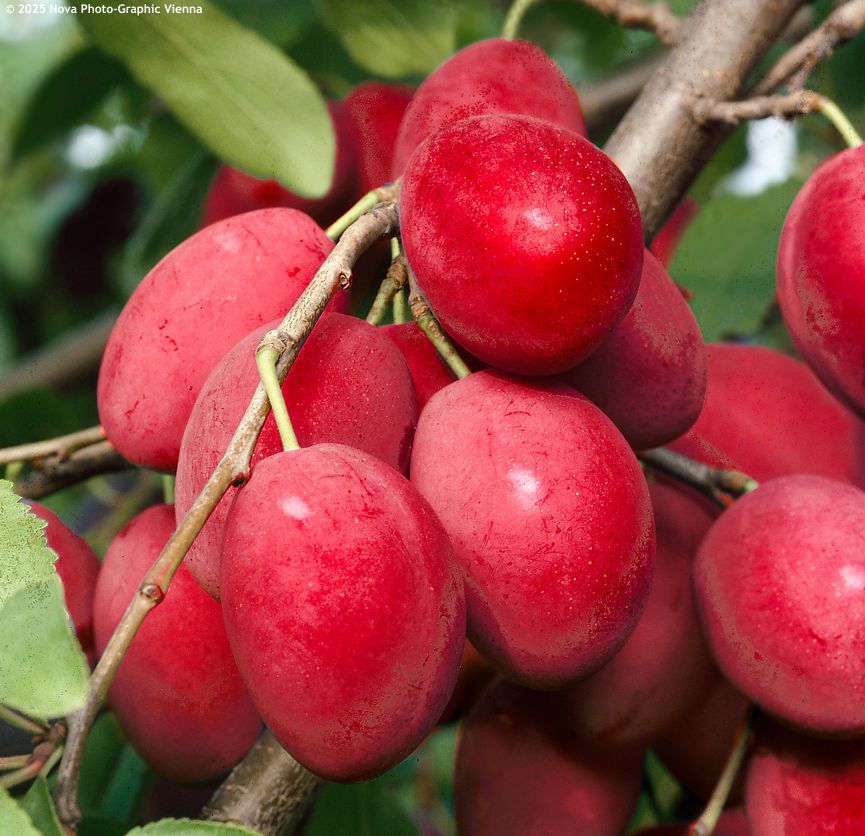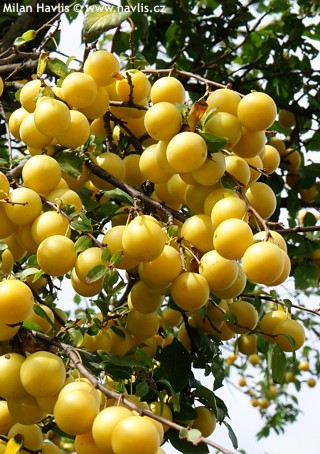Prunus domestica ssp. syriaca 'MIRABELLE RUBY' columnar mirabelle
Prunus
Mirabelle, the dainty sister of the European plum, has earned its place in gardens across Europe not only for its sweet fruit but also for its undemanding nature and rustic charm. It is said to have been brought from the East as early as the 15th century – quite the journey, wouldn’t you say? Botanically, it belongs to the species Prunus domestica, specifically the subspecies syriaca, and its origins trace back to the region of Asia Minor. From there, it spread through Persia into Europe, where it became especially beloved in France. In the region of Lorraine, it found its perfect home – a gentle climate, deep soils, and patient growers. Today, this area produces up to 90% of the world’s mirabelles, and since 1996, the local variety has held a protected geographical indication (IGP) status.
The history of the mirabelle in Lorraine is woven with legends and celebrations. According to one tale, Duke René of Anjou brought it back as an exotic souvenir from a crusade and planted it near the city of Metz. Whether true or not, the mirabelle has become a regional emblem. Every August, the city of Metz hosts the Fête de la Mirabelle, a two-week festival that transforms the city into a culinary and cultural carnival. A Mirabelle Queen is crowned, markets bustle with local produce, concerts and parades fill the streets, fireworks light up the sky, and dozens of hot air balloons rise above the city during the Montgolfiades de Metz. The fruit is served in every imaginable form – as jam, tart, liqueur, or the famous Eau de Vie de Mirabelle, a golden spirit said to “cleanse both soul and digestion.” In local folklore, the mirabelle symbolizes abundance, feminine beauty, and the sweet farewell of summer.
Mirabelle Ruby is a nearly columnar variety of mirabelle that grows tall and slender, as if reaching for the sky. It reaches a height of about 2.5 to 3 meters while maintaining a compact width of under one meter. The tree produces few lateral branches – its fruits grow directly from the trunk and main stems, creating a fairytale-like appearance. The fruits themselves are large and surprisingly plum-oval rather than mirabelle-rounded, with a striking ruby-red skin that gleams in the sun. The flesh is yellow-red, exceptionally juicy and sweet, with a subtly spiced flavour reminiscent of peach skin. The stone separates easily, making it a delight for those who enjoy snacking straight from the tree. It ripens surprisingly late – from end August into early September and is well-suited for both fresh eating and culinary use – compotes, jams, and pastries all benefit from its rich flavour.
The tree is self-fertile, though the presence of other varieties – such as ‘Mirabelle de Nancy’, ‘Opal’, ‘Ontario’, or ‘Victoria’ – significantly boosts yields. It is mostly grafted onto the Saint Julien A rootstock, which ensures moderate vigour and good adaptability to various soil types. In some nurseries, myrobalan is also used, especially for heavier or drier soils, where it proves resilient, though it requires regular removal of root suckers.
Growing a mirabelle is a joy even for beginners. It thrives best in full sun and, while often recommended for sheltered spots – such as against a south-facing wall or in a wind-protected corner – it is not strictly necessary. The soil should be fertile, humus-rich, well-drained, with a pH between 6.0 and 7.5. It can also be grown in containers of at least 40 litres, provided it receives regular watering and feeding. Fertilization is best done in spring with organic fertilizers rich in potassium. Its frost resistance ranges from –27 to –29 °C (USDA zone 5), making it well-suited to temperate climates. Pruning is generally unnecessary, but a light spring trim helps maintain its slender shape. Young trees benefit from staking to prevent wind damage. The fruits are not prone to cracking, but in rainy years, the tree may be susceptible to monilial fruit rot – an airy crown and timely harvesting are the best prevention.
Last update 20-10-2025

































.jpg)




.jpg)
